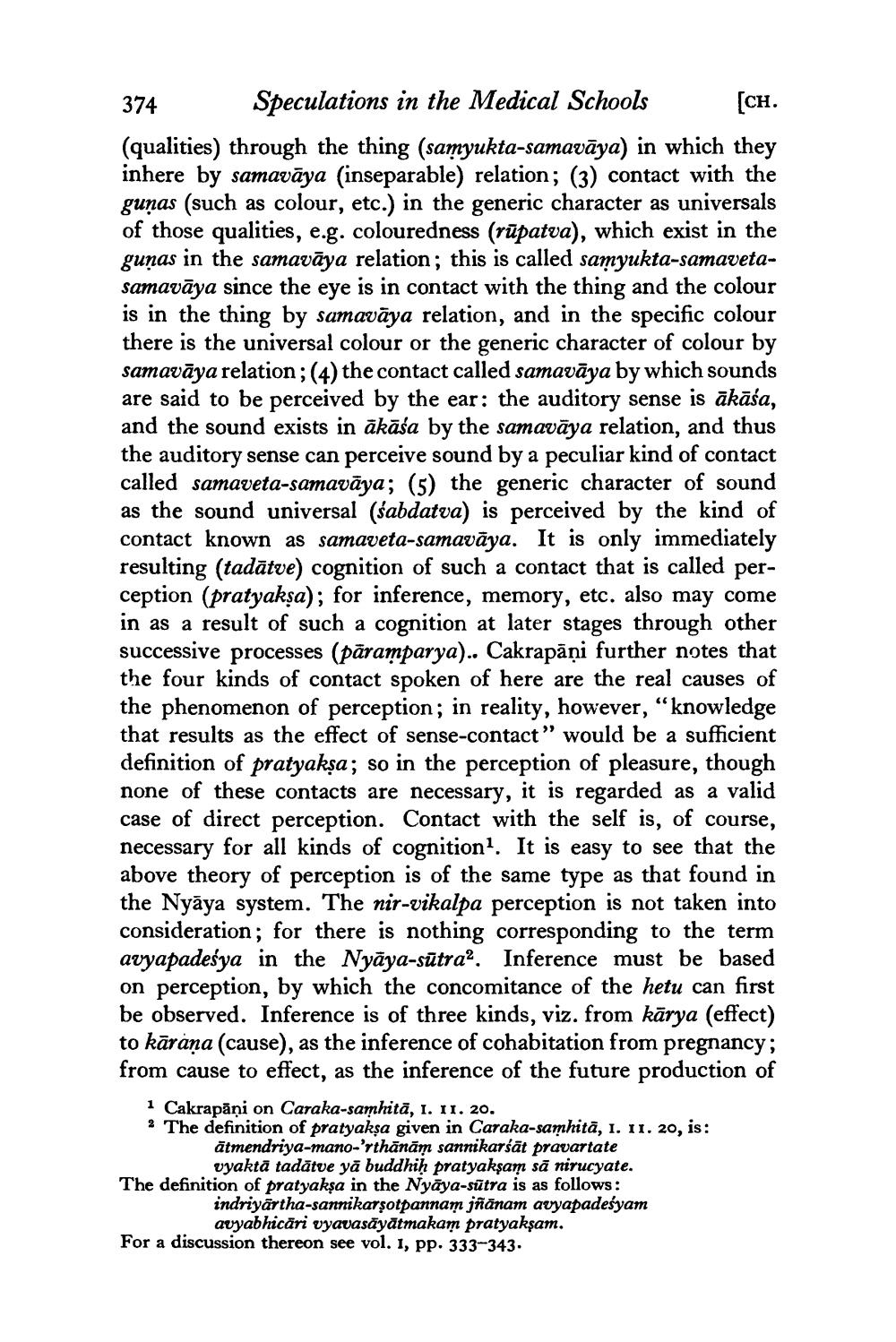________________
374
Speculations in the Medical Schools
[CH.
(qualities) through the thing (samyukta-samavāya) in which they inhere by samavāya (inseparable) relation; (3) contact with the gunas (such as colour, etc.) in the generic character as universals of those qualities, e.g. colouredness (rūpatva), which exist in the gunas in the samavāya relation; this is called samyukta-samavetasamavāya since the eye is in contact with the thing and the colour is in the thing by samavaya relation, and in the specific colour there is the universal colour or the generic character of colour by samavāya relation; (4) the contact called samavaya by which sounds are said to be perceived by the ear: the auditory sense is ākāśa, and the sound exists in ākāśa by the samavaya relation, and thus the auditory sense can perceive sound by a peculiar kind of contact called samaveta-samavāya; (5) the generic character of sound as the sound universal (sabdatva) is perceived by the kind of contact known as samaveta-samavāya. It is only immediately resulting (tadatve) cognition of such a contact that is called perception (pratyakṣa); for inference, memory, etc. also may come in as a result of such a cognition at later stages through other successive processes (pāramparya).. Cakrapāņi further notes that the four kinds of contact spoken of here are the real causes of the phenomenon of perception; in reality, however, "knowledge that results as the effect of sense-contact" would be a sufficient definition of pratyakṣa; so in the perception of pleasure, though none of these contacts are necessary, it is regarded as a valid case of direct perception. Contact with the self is, of course, necessary for all kinds of cognition1. It is easy to see that the above theory of perception is of the same type as that found in the Nyaya system. The nir-vikalpa perception is not taken into consideration; for there is nothing corresponding to the term avyapadesya in the Nyaya-sūtra2. Inference must be based on perception, by which the concomitance of the hetu can first be observed. Inference is of three kinds, viz. from kārya (effect) to kāraṇa (cause), as the inference of cohabitation from pregnancy; from cause to effect, as the inference of the future production of
1 Cakrapāņi on Caraka-samhita, 1. 11. 20.
2 The definition of pratyakṣa given in Caraka-samhita, 1. 11. 20, is: ätmendriya-mano-'rthānām sannikarśāt pravartate vyaktā tadātve ya buddhiḥ pratyakṣam să nirucyate. The definition of pratyakṣa in the Nyaya-sutra is as follows: indriyartha-sannikarṣotpannam jñānam avyapadesyam avyabhicări vyavasāyātmakam pratyakşam. For a discussion thereon see vol. 1, pp. 333-343.




